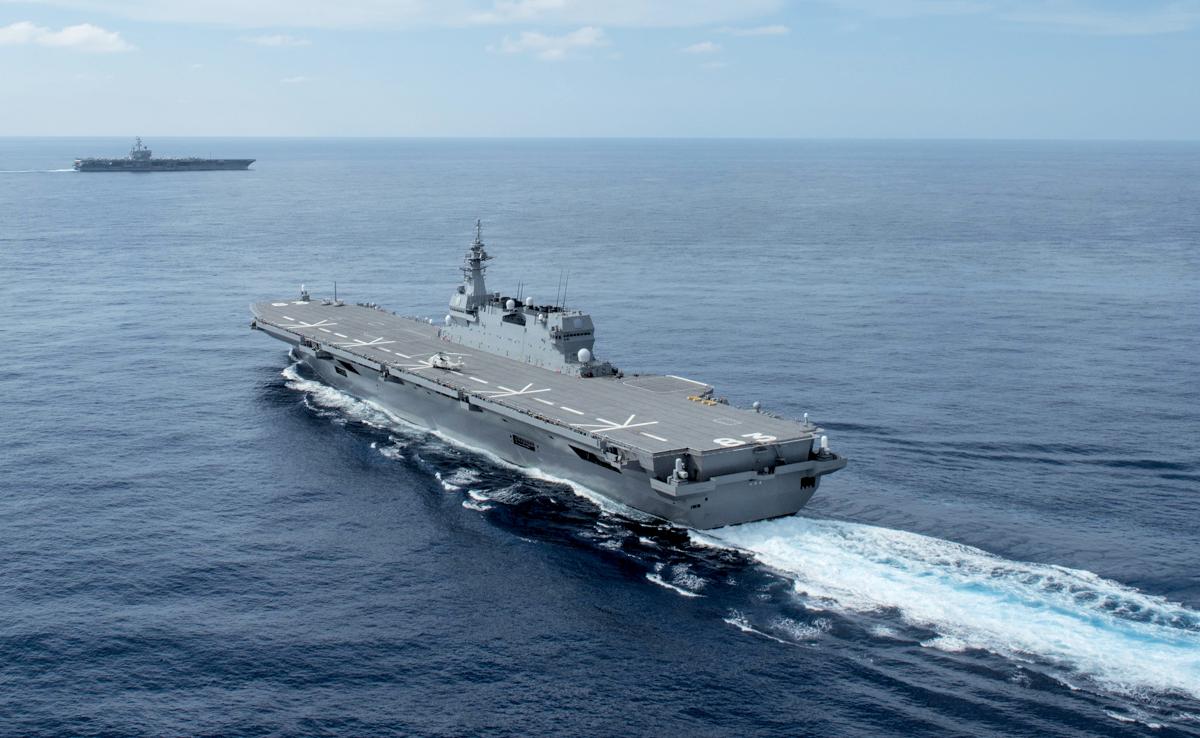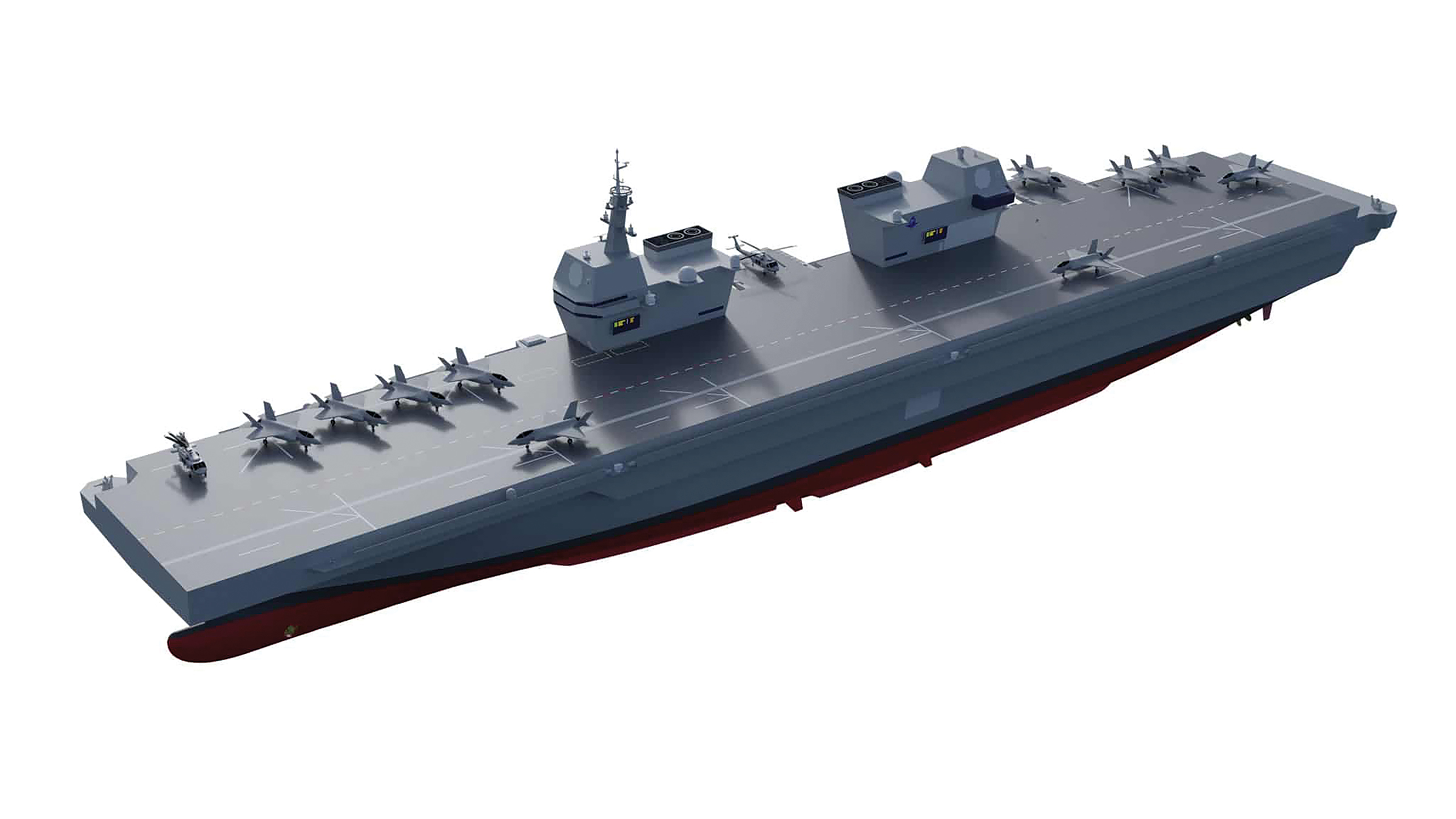The small circle of nations operating aircraft carriers is one of the most elite naval clubs in the world. It once was considerably larger, but the group shrank in recent years as the cost of operating carriers and carrier-based aircraft skyrocketed. But new tensions and technological advances are once again expanding the group, producing a new generation of light aircraft carriers worldwide. The navies fielding them are blazing trails in light carrier design, doctrine, and operation—one that even a larger navy would do well to study carefully.
The end of World War II saw a surplus of aircraft carrier hulls. In addition to countries such as the United States and the United Kingdom that could afford to build and operate their own carriers, countries such as the Netherlands, Australia, Spain, Argentina, and Canada operated hand-me-down wartime carriers, often with updated air wings. But once the ships wore out, in many cases the navies gave up aircraft carriers entirely. Some countries, such as India and Brazil, chose to build their own or settled for less expensive—and less capable—substitutes.
The development of the F-35B, the short takeoff and vertical-landing (STOVL) version of the Joint Strike Fighter (JSF), has brought about a sea change in naval aviation. The number of potential customers for the JSF grew after the Marine Corps’ F-35Bs achieved initial operational capability in July 2015 and began going to sea in 2018. Japan and South Korea are now joining the original customers—the United States, the United Kingdom, and Italy—and more countries in Asia and Europe may follow suit.
The F-35B’s ability to operate from short flight decks has fired the ambitions of regional powers, many of whom are natural sea powers or have a vested interest in protecting the maritime commons. Where once the famed (but limited capability) Harrier was the only such Western fighter/attack aircraft, now the fifth-generation F-35B’s ability to take off and land from ships without catapults or arresting gear has dramatically reduced both the complexity and cost of smaller-scale carrier operations. Countries previously on the fence about carriers now have an affordable path into the elite club.
Japan, once home to the largest, most powerful carrier strike force in the world, is one such country. In the mid-2010s, Japan, in response to a growing People’s Liberation Army Air Force and naval aviation activity in the East China Sea, began discussions about converting its Izumo-class helicopter destroyers into light carriers equipped with F-35Bs. The conversion would be relatively simple: The Izumo and her sister ship, the Kaga, both feature an 814-foot-long flight deck, voluminous hangars, and multiple aircraft elevators capable of bearing the weight of an F-35B.
In 2018, Tokyo decided to upgrade the destroyers into carriers and expand its F-35 purchase to include STOVL aircraft. Japan currently has 42 F-35Bs on order. The Izumo and Kaga should have enough room for at least 13 each. The carriers will also embark a small number of helicopters to provide search and rescue and perhaps even antisubmarine and airborne early warning capabilities.
In 2020 South Korea, driven by the desire for a blue-water navy, a belligerent neighbor, and regional rivals acquiring carriers, announced plans to build the Korean Peninsula’s first aircraft carrier—the LPX-II program. The conventionally powered ship will feature a split island like that found on HMS Queen Elizabeth, conventional propulsion, and an air wing of 10 to 12 F-35Bs. The ship will lack catapults or a ski jump ramp, requiring instead a short takeoff roll, as on U.S. amphibious assault ships.
Unlike the United States, which operates carriers as a means of power projection, Japan and South Korea will probably focus on strategic defense, though with powerful offensive capabilities.
For example, Japan might use its carriers to increase available fighter cover in and around the Ryukyu and Senkaku island chains—the latter of which China insists is part of its territory. The only Japanese airbase that could sortie fighters on a timely basis to cover both chains is Naha on Okinawa. Japan’s local air power can count on being heavily outnumbered responding to Chinese military aircraft in any conflict with its larger neighbor. How the Izumo and Kaga will wage an air battle could be similar in some ways to how the Royal Navy’s air arm fought during the 1982 Falklands War. The plans will be worthy of study.
South Korea’s aircraft carrier will function as a hard-to-kill, mobile airbase. In wartime, North Korean forces almost certainly would target all known air bases to shut them down and deprive the Republic of Korea of a major military advantage. An aircraft carrier would be difficult for the North to track, and its mobility means it can identify and attack through holes in Pyongyang’s aging air-defense network. The LPX-II would play an important supporting role in Seoul’s contingency plans, many of which call for the rapid occupation of Pyongyang in the event of hostilities, to decouple North Korea’s leaders from their weapons of mass destruction.
The Republic of Korea has settled on a preliminary design for its LPX-II light aircraft carrier. Note the twin island structures, similar to the design on the Royal Navy’s HMS Queen Elizabeth. ROK Navy
The development of the United Kingdom’s new aircraft carriers, HMS Queen Elizabeth and Prince of Wales, has been well documented. The decision to add ski jumps to the two ships enhances the F-35B’s capabilities, allowing the jet to become airborne in a shorter rolling takeoff distance with greater amounts of fuel and munitions than with a normal flat flight deck. Italy has taken a similar approach, preserving the ski jump on its carrier Cavour, which previously handled Sea Harriers, as the ship transitions to F-35Bs.
While Japan and South Korea will likely employ their carriers in a defensive, regional role, the Queen Elizabeth and Prince of Wales are meant to be the centerpieces of far-ranging air, land, and sea expeditionary forces. These carriers could operate within the context of a larger NATO operation, but the United Kingdom also has a long record of deploying its carriers unilaterally, such as the deployment of HMS Ark Royal to Belize in 1972, the Invincible and Hermes to the Falklands in 1982, and the Illustrious to Sierra Leone in 2000.
Yet another lesson from the Royal Navy is one from the past. The Royal Navy of the 1980s featured four Sea Harrier–equipped light aircraft carriers primarily configured for antisubmarine warfare and convoy escort. When war did come, however—in the Falklands in 1982 and the Balkans in 1999—the carriers needed to perform other duties, such as fleet air defense, offensive counterair, and strike. And the small “CVLs” proved just as adaptable as their larger cousins.
The navies of the world operating or planning to operate this new generation of CVLs will have to innovate—generating new equipment, techniques, tactics, and procedures. These innovations could well become important lessons
for the U.S. Navy, as it experiments with amphibious assault ships operating as so-called Lightning carriers, equipped with an air wing comprising a dozen or more F-35Bs. As the age-old debate over fleet/supercarriers versus light aircraft carriers continues, it is worth keeping in mind that these allied light carrier operations could provide the U.S. Navy with a plethora of lessons, allowing U.S. naval aviation to quickly bridge a modern experience gap. Perhaps those lessons might even encourage the Navy to operate its own, purpose-built light carriers.




